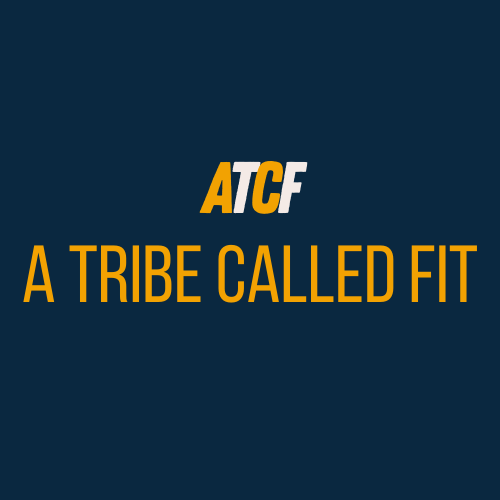Abs Training From Beginner To Advanced
Contrary to popular belief, humans have had abs since before the birth of Instagram.
Even more shocking, they play a role in how we move, perform and feel that goes a lot deeper than garnering likes.
This blog is going to start with me explaining exactly what the abs do as well as why knowing how to train them in a smart way will help solve back, knee and shoulder pain.
You’ll probably skim over this part muttering “blah, blah, blah” and looking for the sexy stuff where I show you some cool ideas for training them.
The only problem with this approach, is that when you get to the exercises you won’t understand or value why they’re so important or useful.
It’s your choice though…if you choose the “blah blah blah” route I’ll bid you toodle-pip for the moment and see you in a few paragraphs time.
What Are Your Core Muscles For?
I admire your style for taking the route of most growth.
Running up the middle of your back is your spine.
The information superhighway of the body.
If this gets screwed, then we’re…well…a bit screwed.
Role one of the core is to protect the spine and keep it stable.
When we think of abs, it’s usually the six pack muscle that comes to mind (Rectus Abdominus), but it extends so much further.
It may help to think of it like a corset that wraps around your torso, connecting to the ribcage, spine and pelvis.
This is where some of the confusion with ab training comes in.
When you look at what the muscles are actually trying to do, to create stability, it becomes clear that a big role of theirs is to withstand movement rather than create it.
When someone barges your shoulder on a busy street, all those muscles fire together to prevent your spinal cord from whipping around and looking like a slinky.
What about when you run or move in your daily life?
You drive force into the floor, but if your core is soft like a jelly, then that energy is going to be absorbed rather than channeled into movement.
Or in the gym.
What would happen during a back squat without a stable core?
You’d end up looking like some kind of concertina cartoon character as that mighty bar crushes you into the ground.
Now don’t take this too far.
You don’t want to be moving around like some stiff robot.
The spine is designed to flex, extend and rotate to some degree.
But performing those movements with any level of athleticism can only be done after a base level of stability has been built.
How Does The Core Work?
The core is like a can of coke.
One of the big connections it makes is from the pelvis to the rib cage.
To be at our strongest and most resilient, we want the top of the pelvis to be pointing directly towards the bottom of the ribcage.
This creates our canister effect.
The bottom of the rib cage is the top of the can and the top of the pelvis is the bottom of the can.
Going back to the can of coke, when it’s in it’s normal shape it can withstand a lot of pressure.
But.
If it gets a little dink in one side it immediately becomes weaker.
The level of stress it can endure becomes significantly smaller.
If the canister position of the core is compromised then we become weaker.
The most common example of this is when the pelvis tilts forwards and the ribs flare up.
This will likely show up as an exaggerated curve in the back.
As we train the core, we want to focus on developing that canister posture and becoming strong in that position.
If the rib cage flares up this will affect how the shoulder blade sits on the ribcage, which will affect how it interacts with the bones of the arm.
Eventually giving you shoulder pain.
(No doubt you’ll then be told to do some rotator cuff exercises that NEVER work because the underlying issue hasn’t been addressed).
As for the pelvis, as it tilts forwards it prevents the rotation of the thigh bone, this commonly feeds into low back pain and as the knee is at the other end of that bone, it can also feed into knee pain.
Best Exercises For Strengthening Your Core
This is where the “blah, blah, blah” group rejoin the rest of us.
A few paragraphs ago I called this the sexy bit.
It’s not.
Like any skill you need to have good fundamentals in place.
Legs Only Deadbug
Deadbugs are a great starting point for building abs that perform well ( as well as look great).
Lying on the floor gives you plenty of feedback as to what position you’re in.
You’ll probably want to focus on keeping your low back tight to the ground and not letting it arch up.
It also allows your body to start understanding how to move your limbs whilst stabilising the spine.
This gives us a chance to retrain the canister position and learn to maintain it as our limbs move.
The legs only deadbug gives a chance to start getting to know the exercise.
The effort should feel like it’s coming from the lower part of the stomach, almost like a belt running deep under the belly button.
Once you’re feeling good with this it’s time to progress.
Deadbug
Now we have the arms involved too.
For many people this initially feels like a coordinating nightmare, but you’ll soon have the feel of it.
Focus on your breathing with each rep.
Start by taking a deep breath into your belly, then slowly breathe out, as if trying to blow out a candle on the ceiling, as the limbs lower down.
Side Plank
For the lateral core I love to start with a side plank.
I know it’s like watching paint dry to perform, but it does a great job at building up stability on the side of your and getting the rib cage into position.
Key point is to check your alignment on the set up.
Make sure the ear, shoulder, hips and feet are all aligned.
When you can perform the full deadbug for three sets of 8 reps per side and can maintain a side plank for 60 seconds, it’ll be time to up the level.
More Advanced Core Exercises
As we’ve already roughly covered, the core is more than just the “six pack” and covers the muscles that stabilise the pelvis.
A little tweak to the side plank can bring in a whole host of these muscles.
Side Plank Top Leg Raised
I know it’s not a catchy name (you can see I’m not a marketing guru) but it sure is fun to try.
This will help the muscles at the side of the butt to start working together with the muscles at the side of the stomach.
Which is great because muscles don’t in isolation, they’re part of a system.
We can play the same game but for the inner thigh muscles.
Adductor Side Plank
If these get weak or grumpy they can feel very tight and lead to the pelvis becoming excessively pulled forwards.
The humble ab-plank can even be pimped up to create some quality challenges.
Ab Plank With Arm Row
As the arm lifts from the ground you’ll lose one of your points of support.
This will make the position less stable.
To make up for this lack of stability your core needs to take up the slack.
Start with your feet wider than a regular plank.
If you can do this without your hips shifting from side to side or your butt wiggling all over the shop, then try bringing the feet closer together.
Stir The Pot
This is super fun (to watch someone else do lol).
As the arms move, the challenge on the core changes and you need to adapt to changes in the level of support.
Cross Body Kettlebell Drag
This is another super fun challenge, remember don’t wiggle the hips.
Start light and keep the reps low.
Three each way makes an interesting start.
See how you feel afterwards and gradually build the volume up of the course of the training cycle.
Last of all for now we have carries.
Carrying heavy shizzle is an amazing way to get strong.
I won’t go into much detail here as this is another post in it’s own right.
Farmer Walks
There’s something called the radiation effect (this has nothing to do with global warming).
Your grip is directly related to your core strength.
It’s an odd experiment but you can try squeezing a (willing) partner/victims hand as hard as you can.
Next repeat this but make a fist as tight as you can with your free hand.
The chances are you’ll notice an increase in your grip strength.
I tell you this so you have a little more appreciation for what is happening in a very simple looking exercise.
Make sure to control your movements as you walk.
Focus on stabilising your spine and not sashaying your way through it as if you’re on a Paris catwalk.
Finally we have…
The Suitcase Carry
This will make your life a breeze the next time you’re dashing through an airport and there are no trollies in sight.
This is just the same as the Farmer Carry, except now the weight is only on one side.
This means the unloaded side has more work to do to prevent your spine from being dragged off to one side.
As ever, start with shorter distances and loads, then build up from there.
As you get stronger, only increase one variable at a time.
Either the weight or the distance, don’t try to boost both at once.
And that’s it.
This is a series of progressions that may take a number of months to transition through (so save this page on your browser so you can come back for a refresh).
This will take you from a beginner with a spine that gets whipped around if the breeze changes direction.


